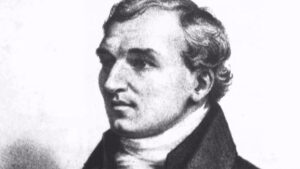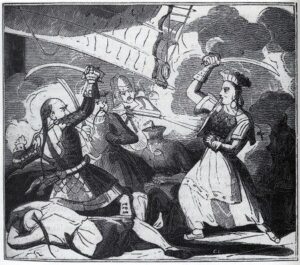I remember strolling down the high street in Glastonbury many years ago. Instead of popular upscale shops like Mango and Next, I found a succession of colorful vintage buildings straight out of a Harry Potter movie. These stores specialized in “magic,” a growing subculture in the UK.
At its heart is the use of spellbooks. However, these books, which supposedly teach readers how to use magic to their benefit, are hardly a new concept. They date back to some of our earliest civilizations and come in various forms.
Book of the Dead
All enthusiasts of ancient Egypt have heard of the Book of the Dead. Hollywood’s exaggerations and artistic liberties have painted the Book of the Dead as, first, an actual book, and second, one that summons creatures and gods. The reality is not as glamorous. The Book of the Dead is simply an instruction manual for the dead.
In ancient Egypt, magic permeated all aspects of life, from preparations for the afterlife to becoming wealthy. Historian and Egyptologist James Henry Breasted wrote that magic was as important as eating, breathing, or sleeping.
Magic was therefore essential for an Egyptian’s journey into the afterlife. For the soul to find paradise, also called the Field of Reeds, Egyptians created this instruction manual for its journey through the treacherous Duat (Underworld.)
This funerary text contains 192 spells, each about an individual stage through which the soul passes. One such ritual is the Opening of the Mouth Ceremony, which provides the soul with the five senses to navigate the Underworld and complete its trials.
Another is the Weighing of the Heart, in which Anubis, the god of funerals, places the heart on the scale against a feather. If the individual led a good life, the scales balanced.

Egypt’s Book of the Dead. Photo: Francesco de Marco/Shutterstock
Contrary to Hollywood’s portrayal of it as a physical book, it is actually an extremely long ream of papyrus with hieroglyphs and images. There is not one single Book of the Dead. Each person needed one for their journey to the afterlife. Each was custom-made, had differing content, and related to the specific person being mummified.
The Key of Solomon
Pop culture has frequently used the Key of Solomon as a source of all secret knowledge. H.P Lovecraft, the CW’s Supernatural, and even Marvel’s Doctor Strange have included it as a plot point. It is probably the most famous example of “Renaissance magic,” which emerged around the 15th and 16th centuries.
During this time, people were very experimental with all kinds of religious and scientific beliefs. Many indulged in the occult and started to write works under the veil of anonymity to avoid exposure and death.
The name Key of Solomon tricks the reader into thinking it was written by the famous biblical king. Perhaps the writer attempting to create an esoteric work that combined Christianity, Judaism, astrology, and the occult, added elements of the Bible to soften the occultist flavor. The text is supposedly from the point of view of King Solomon, who is speaking to his son Roboam. He tells Roboam that an angel came to him in a dream to grant him his heart’s desire: the gift of wisdom and hidden knowledge.
Solomon decides to create a book to pass on this secret knowledge to his son. He says, “If thou wishest to succeed, it is necessary to make the following Experiments and Arts in the appropriate Days and Hours…laid down in the following chapters.”

Diagrams with Hebrew symbology. Photo: British Library
‘I conjure ye…’
The text is strongly influenced by Jewish mysticism and the belief that figures such as Moses and Joshua used magic. For example, the Key of Solomon says, “I conjure ye by the most potent Name of Shaddai…which Moses invoked and having struck in the sea.”
The book also includes information on amulets, talismans, angelic beings, planets and celestial bodies, as well as their influence on us.
The eclectic contents of the Key of Solomon give clues about the identity of the writer. During the 15th century, Jews were persecuted throughout Europe. Many relocated to other parts of the world. Others ended up converting. These converts engaged in what is called Crypto-Judaism. They practiced Catholicism outwardly but retained their Jewish traditions in secret. In response to this life of secrecy, there is a strong possibility the writer could have been one of these individuals. This would explain the combination of mysticism, Judaism, and Christianity.
Greek Magical Papyri
The Greek Magical Papyri is a spellbook dating from 30 BC to 400 AD. During this time, traditional Egyptian culture was heavily influenced by the Greeks. The Greek Magical Papyri is a strong example of this shift and also includes remnants of other cultures of that time, including Coptic, Jewish, and Babylonian.
Historian Radcliffe G. Edmonds III states that “the spells invoke a curiously cosmopolitan set of divinities, from Babylonian Ereschigal to Greek Apollo to Jewish Lao to Egyptian Isis.”
Most likely, Egyptian priests who learned Greek wrote the papyri. During the Ptolemaic dynasty, Greek was the lingua franca of the Roman Empire’s many provinces, including Egypt.
Unusually, the Greek Magical Papyri were for everyday use. Their spells included love potions, taking down an enemy, getting revenge on someone, eternal youth and beauty, and foreseeing the future. Some spells are merely harmless and idle pranks. For example, there is a spell to cause drama at a feast: One had to “throw a dog-bitten stone into the middle,” to get this effect operational.

Greek Magical Papyri hieroglyph. Photo: Monique van der Veen
The papyri went from one private collector to another over the centuries. It only became public in the 19th century when academics started to take interest in it and translated it.
Archidoxis Magica
Like many of its contemporaries, the 16th-century grimoire called Archidoxis Magica attempted to reconcile Christianity with the occult, astrology, and alchemy. However, the occult aspects are way more emphasized despite the text’s introductory insistence that “having first invocated the Name of the Lord Jesus Christ our savior, we will enterprise this work…”
At the opening of every chapter, it mentions God the Creator and Jesus Christ. It then delves into magical practices, focusing mostly on the use of talismans, signs of the zodiac, and popular alchemical processes of the time. It follows this formula for the rest of the book.
This could have been a way of drawing the reader in, to downplay the obvious contradictions of a belief system that was simultaneously occultist and Christian. It tries to manipulate the reader into thinking these practices are fine when, in reality, they could ostracize the practitioner from society. Much like the Key of Solomon, it was another example of Renaissance magic, although it tries a bit harder to gain acceptance from Christians.
Many believe the writer might have been Paracelsus, a 16th-century Swiss doctor who revolutionized medicine. He had a vast knowledge of chemical processes, poisons, and mental health issues from years of traveling through Europe. He discovered the importance and impact of minerals on the human body and founded the discipline of toxicology.
However, this type of literature was out of character for this renowned doctor, who seemed to focus more on natural sciences and proper research rather than the supernatural.
Black Pullet
The Black Pullet, also called The Hen with the Golden Eggs, was also a grimoire — a book of magic explaining how to summon spirits and cast spells. Composed in the 18th century, it had a distinct flavor of Jewish mysticism.
The origin of this text is quite different from other spellbooks. It was supposedly written by an unnamed soldier during the Napoleonic Wars. He was in Napoleon’s army, which had traveled to Egypt and Syria from 1798 to 1801.
The battles in the region not only had a military purpose but also a scientific one. Napoleon launched expeditions to learn about a region’s flora, fauna, and natural resources. However, this particular soldier seemed to prefer the supernatural to the scientific.
He claimed that he learned of “secret sciences” from a Turk who saved his life in Egypt during a battle. In the text, the narrator relays what the mysterious Turk tells him: “The science of the magicians, the language of the hieroglyphs, have been lost by the downfall of man…I will impart these precious confidences to you.”
He promises that this knowledge unlocks immense riches and fame. Strangely enough for a Turk, the secret sciences delved deep into the Jewish Kabbalah, a branch of Judaism that focused on prophetic revelations and personal spiritual intimacy with God — a practice loosely known as esotericism.






